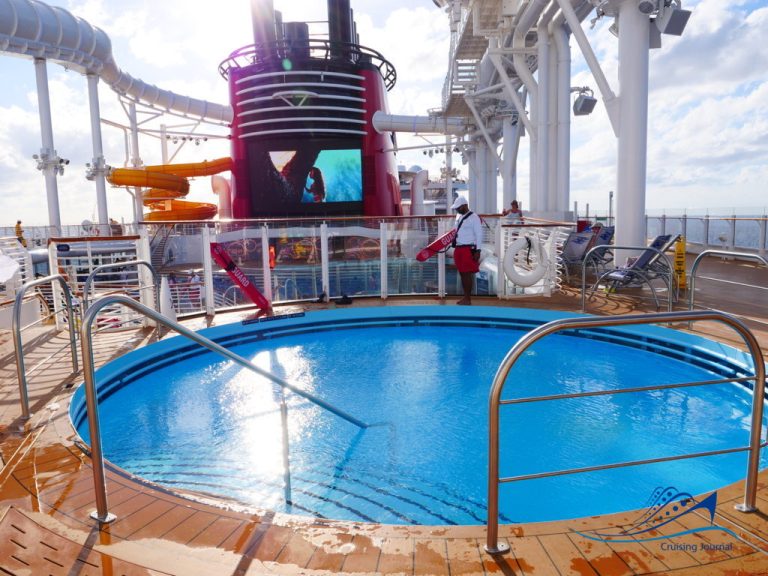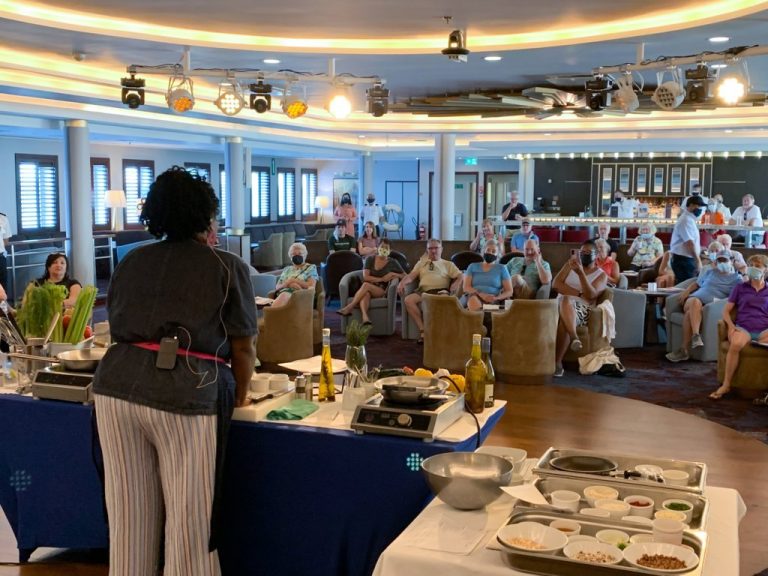How Cruise Lines Are Captivating First-Time Travelers
As a “new to cruise” traveler myself, I have experienced the immense surprise that people encounter when learning the infinite possibilities of cruising around the world. There is a product, destination and style for every traveler.
In recent years, the cruise industry has embraced an exciting opportunity: to showcase the wonders of cruising to a new demographic and captivate a new generation of travelers. This fresh wave of potential cruisers presents a dynamic and diverse audience eager for unique vacation experiences. Recognizing the immense potential in attracting “new to cruise” travelers, cruise lines have embarked on a journey to redefine perceptions and highlight the vast array of enriching experiences that modern cruising offers. By tailoring their strategies to appeal to younger and more diverse travelers, the industry is not only expanding its customer base, but also ensuring its vibrant future.
One of the primary strategies employed by cruise lines is the creation of targeted marketing campaigns that directly address common misconceptions about cruising. Many potential travelers hold outdated views of cruises as being solely for retirees or lacking in diverse activities. To combat this, cruise lines have crafted advertisements that highlight the modern, dynamic nature of cruising. These campaigns often feature younger travelers enjoying a wide range of activities, from adventurous shore excursions to high-energy onboard entertainment. By presenting cruising as an exciting and versatile vacation option, these campaigns aim to shift public perception and attract a younger, more diverse customer base.
Azamara e Perrygolf
Msc World Europa Venom Drop
Msc World Europa Msc Sportplex
Social media has become a powerful tool in these marketing efforts. Cruise lines have embraced platforms like Instagram, TikTok, and YouTube to reach younger audiences where they spend much of their time. Influencers and travel bloggers are often enlisted to document their cruise experiences, providing authentic and relatable content that showcases the appeal of cruising. By leveraging the reach and credibility of these social media personalities, cruise lines can tap into new markets and inspire potential travelers to consider cruising as a viable vacation option.
Innovative ship design and onboard amenities are another crucial aspect of attracting new cruisers. Modern cruise ships are being built with a focus on providing a wide range of experiences that can appeal to diverse tastes and interests. For example, many new ships feature extensive recreational facilities such as water parks, rock climbing walls, and even skydiving simulators. These attractions cater to adventure seekers and families looking for an active vacation. Additionally, cruise lines have invested in creating luxurious spa facilities, gourmet dining options, and exclusive adults-only areas to attract couples and solo travelers seeking relaxation and indulgence.
Family-friendly amenities have also been a significant focus, as cruise lines recognize the importance of appealing to multi-generational travelers. Kids clubs, teen lounges, and family-oriented entertainment options are designed to ensure that children and teenagers have an engaging and enjoyable experience. By offering activities and spaces that cater specifically to younger travelers, cruise lines make it easier for families to choose a cruise vacation, knowing that there will be something for everyone to enjoy.
Themed cruises have emerged as another innovative way to attract new travelers. These cruises are designed around specific interests or hobbies, offering unique experiences that can’t be found on traditional vacations. Popular themes include music festivals at sea, wellness retreats, culinary cruises, and even cruises centered around popular TV shows or movies. By providing a themed experience, cruise lines can attract niche markets and enthusiasts who might not have considered a cruise otherwise. Themed cruises not only offer specialized activities and events but also create a sense of community among passengers who share similar interests.
Azamara e Perrygolf
Azamara e Perrygolf
Just a little over a year ago, I was able to experience Japan from a small-ship cruise perspective. Never had I thought that cruising could give me a second opportunity to visit one of my favorite countries in such a depth. I actually had an even more immersive and local experience than following the usual tourist route by plane and train. Expanding and diversifying itineraries is another key strategy in attracting new cruisers. Traditionally, many people associate cruising with the Caribbean or Mediterranean regions. While these destinations remain popular, cruise lines are increasingly offering itineraries that explore less conventional locations. Alaskan cruises, river cruises in Europe and Asia, and expedition cruises to Antarctica or the Galápagos Islands are just a few examples. These unique itineraries appeal to travelers seeking adventure and exploration, showing that cruises can offer more than just sun and sand.
Partnerships with travel agents and tour operators have also been instrumental in reaching new audiences. Travel agents play a crucial role in demystifying the cruise experience for potential travelers. They can provide personalized recommendations and highlight the benefits of cruising based on individual preferences and interests. Cruise lines have invested in training programs and incentives for travel agents to ensure they are well-equipped to sell cruise vacations. By empowering travel agents with the knowledge and tools they need, cruise lines can effectively reach a broader audience.
In addition to these efforts, cruise lines have recognized the importance of addressing environmental concerns and promoting sustainable practices. Many potential travelers, particularly younger generations, are increasingly concerned about the environmental impact of their vacations. In response, cruise lines have implemented various sustainability initiatives, such as reducing single-use plastics, investing in cleaner technologies, and supporting conservation efforts in the destinations they visit. By demonstrating a commitment to environmental stewardship, cruise lines can appeal to eco-conscious travelers who might have otherwise been hesitant to book a cruise.
Another crucial aspect of attracting new cruisers is offering competitive pricing and value-added packages. The cost of a cruise can sometimes be a deterrent for first-time travelers. To address this, many cruise lines offer attractive promotions, such as discounted fares, onboard credits, or inclusive packages that bundle meals, drinks, and excursions. These offers make cruising more accessible and provide added value, encouraging potential travelers to take the plunge and book their first cruise.
SALT Bar Drinks
Archipelago Restaurant
Education and transparency are vital in reassuring new cruisers. Many first-time travelers may have concerns about safety, health protocols, or what to expect during a cruise. Cruise lines have made significant efforts to provide clear and comprehensive information about their health and safety measures, particularly in the wake of the COVID-19 pandemic. By offering detailed guidelines and transparent communication, cruise lines can alleviate concerns and build trust with potential customers.
Personalization has become a key trend in the travel industry, and cruise lines are no exception. Modern technology allows for a highly personalized cruise experience, from pre-cruise planning to onboard activities. Mobile apps and online platforms enable passengers to customize their itineraries, book excursions, and make dining reservations before they even set foot on the ship. Onboard, wearable technology such as smart wristbands can streamline the experience by allowing for cashless payments, room access, and personalized recommendations. By offering a tailored experience, cruise lines can ensure that new cruisers feel valued and catered to, enhancing their overall satisfaction.
Cruise lines have also recognized the importance of offering flexibility and peace of mind to potential travelers. Flexible booking policies, such as refundable deposits and the ability to change travel dates without penalties, make it easier for new cruisers to commit to a cruise vacation. Additionally, comprehensive travel insurance options provide reassurance in case of unforeseen circumstances. These policies help mitigate the perceived risk of booking a cruise and encourage potential travelers to take the leap.
Disney Wish World of Marvel Restaurant
Disney_Wish_Goofys_Pool
Collaborations with popular brands and franchises have proven effective in attracting new cruisers. Partnerships with well-known brands, such as Disney, Marvel, or Nickelodeon, create themed experiences that appeal to fans of all ages. These collaborations bring beloved characters and stories to life onboard, offering a unique and immersive vacation experience. For families with young children or enthusiasts of these franchises, such themed cruises provide a compelling reason to choose a cruise over other vacation options.
The culinary experience on cruise ships has also been significantly enhanced to attract food enthusiasts. Cruise lines have partnered with celebrity chefs and renowned restaurateurs to offer gourmet dining experiences that rival top land-based restaurants. Specialty dining venues, cooking classes, and wine tastings are just a few of the culinary offerings that cater to food lovers. By elevating the dining experience, cruise lines can appeal to travelers who view food as a central part of their vacation experience.
Windstar e James Bear Foundation
Windstar e James Bear Foundation
Accessibility and inclusivity have become increasingly important in attracting new cruisers. Cruise lines have made significant strides in ensuring that their ships and itineraries are accessible to travelers with disabilities or special needs. This includes features such as accessible staterooms, wheelchair-friendly facilities, and tailored shore excursions. By promoting these inclusivity efforts, cruise lines can attract a broader range of travelers, ensuring that everyone can enjoy the cruise experience.
Finally, the emphasis on wellness and self-care has influenced the cruise industry’s offerings. Wellness-focused cruises that feature yoga retreats, meditation sessions, fitness classes, and spa treatments cater to travelers seeking rejuvenation and well-being. These cruises often include expert-led workshops and seminars on topics such as nutrition, mental health, and holistic wellness. By aligning with the growing trend of wellness travel, cruise lines can attract health-conscious individuals looking for a vacation that prioritizes their physical and mental well-being.
Overall, the cruise industry has undertaken a multifaceted approach to attract “new to cruise” travelers, recognizing that this demographic is essential for future growth. Through targeted marketing campaigns, social media engagement, innovative ship design, themed cruises, diverse itineraries, partnerships with travel agents, and a focus on sustainability and flexibility, cruise lines are successfully broadening their appeal. By addressing common misconceptions, enhancing the onboard experience, and providing value-added options, they are making cruising a compelling and accessible vacation choice for a wide range of travelers. As these efforts continue to evolve, the cruise industry is well-positioned to welcome a new generation of cruisers who will contribute to its sustained success.
Don’t miss news, updates and reviews about the world of cruise on Cruising Journal.











